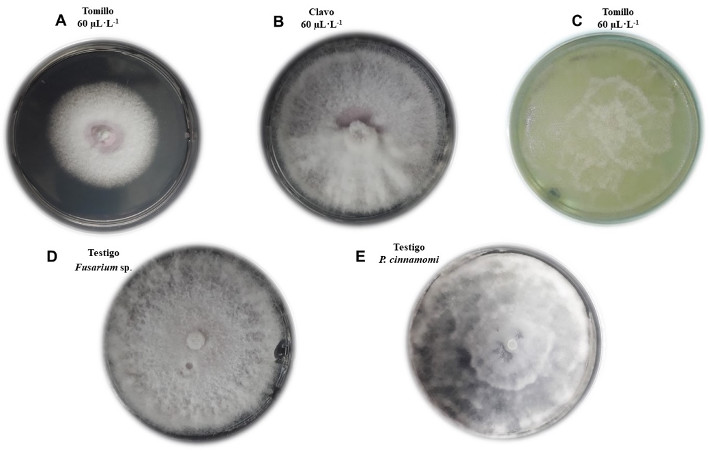Potential of essential oils in the control of Phytophthora cinnamomi Rands and Fusarium sp. in vitro in Cinnamomum verum
DOI:
https://doi.org/10.28940/terra.v40i0.1004Keywords:
essential oils, cinnamon verum, alternative control, Fusarium sp., P. cinnamomiAbstract
Cinnamon (Cinnamomum sp.) is a species with few but significant health limitations, of which Phytophthora cinnamomi and Fusarium sp. are the most important ones that affect the root. Their control based on synthetic fungicides has favored resistance due to poor handling, so their control with essential oils is a viable alternative. The objective of this study is to determine the antifungal potential of thyme and clove – essential oils for the control of P. cinnamomi and Fusarium sp. isolated from Cinnamomum verum. Concentrations of 60, 120 and 300 μL L-1 were evaluated for both oils and phytopathogens. Data recorded on the mycelial growth rate of pathogens after incubation of Fusarium sp. at 25 ± 1 °C and 28 ± 1 °C had a significant difference in the concentrations tested. When clove essential oil was used in P. cinnamomi, the pathogen did not grow with the concentration of 300 μL L-1; with 120 μL L-1 growth rate was 0.06 mm per day, and with the concentration of 60 μL L-1, it reached a growth rate of 1.16 mm per day. With respect to Fusarium sp. mycelial growth was completely inhibited with doses of 120 and 300 μL L-1 of essential oils; with thyme oil a similar trend was observed at concentrations of 120 and 300 μL L-1 greatly inhibiting effects of the two pathogens. It is noteworthy that the doses of 300 μL L-1 of the two essential oils are able to inhibit in their entirety (P ≤ 0.05) growth of both pathogens. The use of thyme and clove essential oils can be an alternative in preventive control of cinnamon root diseases.
Downloads
Publication Facts
Reviewer profiles N/A
Author statements
- Academic society
- Terra Latinoamericana
- Publisher
- Mexican Society of Soil Science, C.A.

















